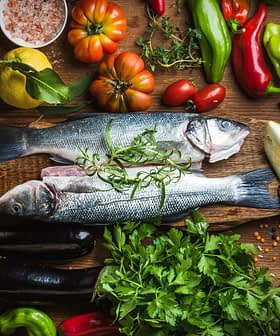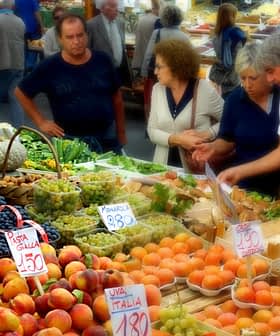Ready to Try the Nordic Diet? Nutritionists Suggest One Important Tweak.
The Nordic diet emphasizes eating whole grains, in-season fruits and vegetables, and fish. Adding olive oil can make the diet more flavorful and replace canola oil as the traditional cooking fat.
The Nordic diet, created in 2004 by chefs focused on health and sustainability, emphasizes whole foods sourced locally and features items like whole grains, fish, and berries. While canola oil is a common ingredient in the Nordic diet, swapping it out for olive oil can enhance the health benefits and flavor of meals, with both oils being high in heart-healthy fats.
For those on the Mediterranean diet who are looking for a few new dishes or want to try something a bit different altogether, look north — way north — to Scandinavia and its Nordic diet.
“The Mediterranean and Nordic diets are based on adopting a healthy lifestyle rather than following a restrictive diet ‘plan’ and revolve around seasonal, sustainable and locally sourced foods of their respective regions,” said Layne Lieberman, a registered dietician and author of Beyond the Mediterranean Diet: European Secrets of the Super-Healthy. “Both are plant-based, pescatarian focused and emphasize a variety of healthful and wholesome food choices.”
We have far more research about the health-protective benefits of extra virgin olive oil compared to canola, and its production is more straightforward.
The Nordic diet was created by a group of health and sustainability-minded chefs in 2004, with an eye toward consuming whole foods sourced locally, thus supporting healthy bodies and the environment. The diet emphasizes “hearty and dense whole grains, legumes, seasonal, organic and foraged vegetables and fruits, fish from oceans and lakes, moderate amounts of quality meat, low-fat dairy and eggs, and less processed and sugary foods,” Lieberman said.
Berries, omega-3-fatty fish, lentils and other high-fiber foods, and grains such as oats, rye and barley feature heavily in the Nordic diet.
See Also:Olive Oil Health NewsHowever, there is a pesky oil in the Nordic diet: canola oil. It thrives in cooler climates, which is why it is the default oil for the locality-focused Nords. But switching in olive oil for raw and cooking purposes can help boost the diet’s health benefits, according to Cynthia Sass, a Los Angeles-based performance nutritionist.
“We have far more research about the health-protective benefits of extra virgin olive oil compared to canola, and its production is more straightforward,” Sass said.
Lieberman said both oils are high in heart-healthy monounsaturated fats, but that canola oil can be highly processed.
Besides the health benefits, swapping in olive oil for canola oil in Nordic diet meals can also boost flavor.
“Fresh [extra virgin] olive oil is more flavorful than canola oil. I love to use it sparingly over salads, cooked pasta, steamed vegetables and seafood,” Lieberman said.
She added that olive oil can be used as a marinade or as a butter replacement, regardless of the diet, in baked goods.
Sass echoed the sentiment that olive oil can be a good replacement when cooking Nordic diet items, adding that it is a good fat for roasting root vegetables or cooking red cabbage.
Compared to the Mediterranean diet, which has undergone extensive research since its popularization in the mid-20th century, there are fewer studies on the Nordic diet. However, the World Health Organization found in a recent survey of locality-based diets that the regimen “has been shown to promote cardiovascular health” and “produce weight loss” in people categorized as obese.
As a final point, Lieberman said any diet, whether it is Mediterranean, Nordic or something else, needs to be followed in concert with an active lifestyle. Given that, practitioners of the Nordic diet outside Scandinavia can take a few cues from the population there.
“An active lifestyle is essential to the success of both the Mediterranean and Nordic diets,” she said. “People of the Nordic region bicycle as a means of transportation, even during the freezing-cold winter months, use public transportation, walk everywhere (even in the rain) and enjoy skiing and other sports.”
Because the Nordic diet has such a focus on sourcing local foods, both for their health and environmental benefits, Lieberman said people who live in colder climates might have easier access to foods featured in the diet: root vegetables, cabbage and sauerkraut. For those in warmer climates, a blend of Nordic and Mediterranean diet foods might be worth experimenting with.









